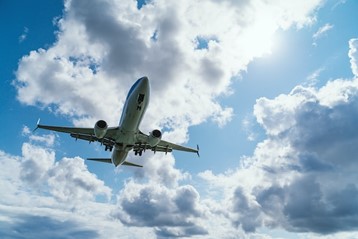William Boos works in aviation as an air traffic controller. In the following article, William Boos explains how with split-second decisions and unwavering focus, these skilled professionals orchestrate the symphony of planes, guiding them through the clouds and ensuring smooth and secure journeys for millions of passengers worldwide.
Every single day, an estimated 100,000 flights take place in our global skies.
Air traffic controllers are responsible for every single one. Whether they are passenger, military, or cargo planes, it’s a team of essential aircraft controllers around the world that makes sure travel is safe and efficient.
It’s no simple task. Here’s how air traffic control manages our more-crowded-than-ever friendly skies.
William Boos on the Background
Air traffic control refers to the general system that manages an aircraft’s every movement on the ground and in the air. The primary goal is the safety of pilots and passengers, but also those on the ground. Air traffic control is required to avoid collisions and make sure air traffic flows efficiently.
Air traffic control is overseen by either agencies or aviation authorities. For example, in the United States, the responsibility goes to the Federal Aviation Administration (FAA). European air traffic control is monitored by the European Organization for the Safety of Air Navigation (EUROCONTROL).
William Boos says that essentially, it comes from linked locations, such as control facilities and towers as well as traffic control centers.
How Air Traffic is Controlled
Modern technology, including satellite and communication systems, as well as radar, allows air traffic controllers to track aircraft movements every moment of the day.
Radio communications link air traffic controllers with pilots and help pilots determine specifics related to flight direction, speed, and altitude. Air traffic controllers work within the operation of both private and commercial aircraft.
William Boos Aviation explains that many factors impact air traffic, especially weather, and accidents. That’s why air traffic controllers rely heavily on weather reports and extensive flight plans to generally manage air traffic and make decisions on adjustments when needed.
In the U.S. alone,
nearly 5,000 planes are in the air at any given hour, making updated reports essential to moving traffic out of and into airports efficiently, to ensure few delays and utmost safety.
The FAA
works every day of the year, 24 hours a day, seven days a week. In its jurisdiction is 24 square miles of American airspace over oceans and 5.3 million square miles of airspace that is domestic.
William Boos Aviation says that there are over 14,000 air traffic controllers in the United States working at 700 FAA facilities.

 Zones of Air Traffic
Zones of Air Traffic
William Boos of Direct Airway says that since air space is vast, the work of air traffic controllers is usually divided up into different sectors or zones. For example, in America, there are 21 zones of airspace, and each is further divided into sectors. Each zone also includes multiple 50-mile sections of airspace.
Overall air traffic control is overseen by a system’s System Command Center, which manages issues such as runaways that are not operating or an overload in traffic. Each center includes one Air Route Traffic Control Center (ARTCC).
William Boos Aviation notes that every airport has an air traffic control tower that focuses on landing, takeoff, and traffic on the ground. Small airports, especially those in rural areas in the U.S. reply on a flight service station to provide updated information on terrain, routes, weather, and flight plans for private pilots.
And it All Begins with a Flight Plan
William Boos of Direct Airway explains that air traffic situations are considered well before one boards a flight. It all starts with a plane being inspected and a pilot sending a flight plan to a control tower.
The plan is sent to the tower where a controller reviews the information and formally enters it into an FAA computer. In addition, a command center creates a plan for operations every day that covers areas heavily impacted by the volume of aircraft or weather. There’s also a plan on how to alleviate delays.
A pilot is given a go-ahead online after the flight plan has been reviewed and improved. The primary control work then shifts to a ground personnel who guides aircraft taxiing before takeoff on a runway. They also then guide planes to gates when they land.
Local tower controllers constantly monitor weather and radar to track a plane during flight. Among their vital duties: takeoff clearance and making sure there is a safe distance between planes during takeoff and while they are in the air.
William Boos of Direct Airway says that weather conditions are by far the most common cause of delays in flights since they usually require alterations to flight plans. This includes slow-moving but ferocious winter storms but also swift and large summer storms.

 Zones of Air Traffic
Zones of Air Traffic